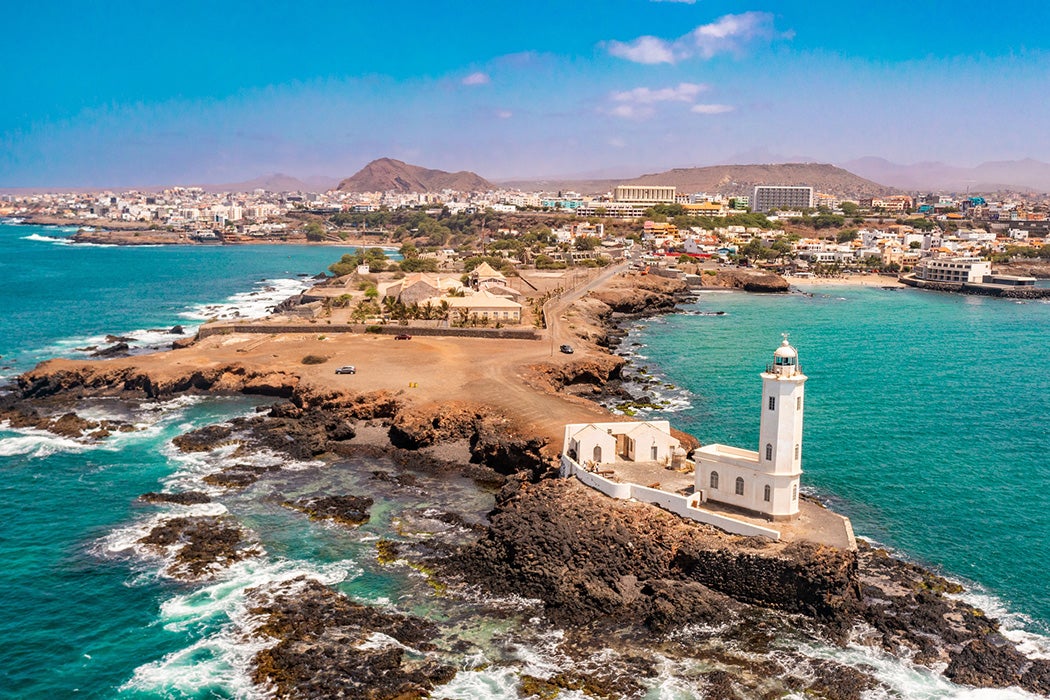Cape Verde (or the Republic of Cabo Verde, officially) stands out among the history of other African Lusophone nations after independence came to them all in the mid-1970s. Unlike the mainland nations of Mozambique, Angola, and Guinea-Bissau, this scattered archipelago of islands, 450km off the continent’s western coastline (Cape Verde’s closest neighbours are Mauritania and Senegal) has avoided civil war and violent coups since proclaiming independence from Portugal in 1975.
Not that this relative peace has always resulted in prosperity. The arid land and lack of natural resources means famine is within living memory for many Verdeans, with two occurring in quick succession in the 1940s. As historian George Brooks explains, such tragic episodes occurring over the last four centuries were preventable, caused by reasons as diverse as Portuguese colonialists refusing to allow locals to own their own fishing craft lest they should assist enslaved people attempting to escape to, more recently, fisherman refusing to work in shark-infested waters in their decrepit vessels without compensation.
Uninhabited until it was discovered by Portuguese colonizers in 1462, Cape Verde played a major role in the Atlantic slave trade, with one of the consequences being the development of Creole as a common language. Sociologists Katherine Carter and Judy Aulette detail how Creole on Cape Verde has morphed from being considered a “low status” language by colonial settlers to one which is now taught in schools and thrives in the written form.
One of the greatest devotees of Creole, and an artist who won a Grammy award for her devotion to the Verdean musical genre of morna is the late Cesária Évora. Known as the “barefoot diva” for her habit of performing on stage without shoes, Évora loved the morna musical style. Ethnomusicologist Susan Hurley-Glowa explains that this languid, lyrically melancholy music hewn from the themes of the sea, parted lovers, and a longing for home can be linked to nineteenth- and early twentieth-century “Atlantic dance traditions and salon styles, especially those associated with South America and the Caribbean.” She argues that like the coladeira and funaná dance genres, morna is part of “the complex Black Atlantic musical reiterations that became the Argentinian and Brazilian tango, as well as maxixe, foxtrot, beguine and many other popular forms[.]”
Dance, like other cultural forms, travels with people. Colossal emigration from Cape Verde means the diaspora is now far bigger than the islands’ population, explain Jørgen Carling and Luís Batalha in their 2008 edited volume on Cape Verdean migration. Their transnational collection examines Verdean communities in regions as far flung as the Netherlands and Argentina.
Beginning in the late 1980s, tourism began to develop in the archipelago, particularly on the islands of Sal and Boa Vista, resplendent as they are with long, lapping stretches of beach. Another draw for visitors is the chance to spot loggerhead sea turtles. Some 15 percent of the global loggerhead population clambers out of the ocean to lay eggs on Cape Verdean beaches.
Weekly Newsletter
Conservation efforts have seen a huge boom in nestings over the last decade. Yet, as with so much on these islands that are so vulnerable to climate change as well as the natural elements, the long-term future of turtles is uncertain. Rising temperatures mean the sands on Cape Verdean beaches are heating. As a study published in 2019 in the Marine Ecology Progress Series explains, this has an effect on the gender of the eggs, with hotter sands meaning an increased likelihood of the baby turtles only being female. “In future climate change scenarios,” write the authors, “sex ratios reach over 99% female, and 3 islands (Fogo, Sao Nicolau, Santiago) would cease to produce males, with >90% of nests incubating at lethally high temperatures.”
Increased tourism and more flights to the Cape Verdean islands may mean economic growth, but it will also affect the famed marine reptiles that many visitors come here to see. Not for the first time in its history, these remote islands find themselves caught in a Catch-22-esque dilemma not entirely of its own making.







